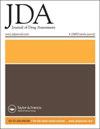Determining specialty pharmacy FTEs (full-time equivalents) needed in a clinical practice
IF 2.4
引用次数: 0
Abstract
Abstract Background: The Hospital of the University of Pennsylvania (HUP) created the Penn Specialty Pharmacy Program in 2014 to establish a pharmacy presence in clinics, with a patient focus on specialty medication access and adherence. The program utilizes both pharmacists and technicians to assist the clinics with medication counseling, prior authorizations, and copay assistance. As the program expands to more clinics throughout Penn, there is a growing need to employ more pharmacists and technicians, without a method in place to determine exactly how many FTEs are needed in clinic. Aims: To determine the number of clinical pharmacist and technician FTEs required in a clinical practice for maximum efficacy and patient care. Methods: Calculations were obtained by recording duties handled by the pharmacist (including those for which time does not allow), and determining if the task requires handling by a pharmacist, or if it could be delegated to a tech. This pilot program was first tested in the Dermatology Clinic at HUP, with the intent of launching throughout Penn, if successful. Once assignments were determined as either pharmacist or tech-appropriate, the recommended number of FTEs needed in the practice was calculated based on data obtained during an average 8-h work day: Duration of all tasks (in hours) × 5 days = ___ RPh/Tech Hours, and RPh/Tech Hours/40 = ___ RPh/Tech FTE. Results: The Dermatology pharmacist was observed over the course of 4 h as they completed several tasks, such as sending electronic rxs, patient calls, filling out paperwork for drug manufacturer programs, and responding to patient and provider cost-related concerns. Using the formula, and including roughly 7 h of assistance a pharmacist cannot currently provide (clinic/photopheresis rounds, appeals, etc.), this study was able to determine that the clinic would require ∼1.5 Pharmacist FTE and 0.39 Tech FTE. Conclusions: Many of the duties categorized as tech-specific were clerical or cost-related issues that did not require clinical intervention from a pharmacist. Addition of the 0.39 Tech FTEs would provide the RPh with additional resources to delegate duties to a tech, maximizing focus on patient care. This would also give the clinic an opportunity to include the pharmacist in other areas of the practice. More data may be needed to make a final decision on the needs of the clinic; however, this will be a helpful tool in validating departmental needs in other clinical settings for broad use in FTE determinations.确定临床实践所需的专业药学专职人员(相当于全职人员)
背景:宾夕法尼亚大学医院(HUP)于2014年创建了宾夕法尼亚大学专科药房项目,在诊所建立药房,让患者关注专科药物的获取和依从性。该计划利用药剂师和技术人员协助诊所进行药物咨询,事先授权和共同支付援助。随着该计划扩展到整个宾夕法尼亚的更多诊所,越来越需要雇用更多的药剂师和技术人员,而没有适当的方法来确定诊所需要多少全职员工。目的:确定临床实践中临床药师和技术员fte的数量,以达到最大的疗效和患者护理。方法:通过记录药剂师处理的任务(包括那些时间不允许的任务),并确定该任务是否需要药剂师处理,或者是否可以委托给技术人员来处理,从而获得计算结果。该试点项目首先在HUP的皮肤科诊所进行了测试,如果成功,打算在整个宾夕法尼亚开展。一旦任务被确定为药剂师或技术合适,根据平均8小时工作日获得的数据计算实践中所需的推荐FTE数量:所有任务的持续时间(小时)× 5天= ___ RPh/技术小时,RPh/技术小时/40 = ___ RPh/技术FTE。结果:在4小时的观察过程中,皮肤科药剂师完成了几项任务,如发送电子病历,患者电话,填写药品制造商计划的文书工作,以及回应患者和供应商与成本相关的问题。使用该公式,并包括药剂师目前无法提供的大约7小时的帮助(诊所/光镜检查,申诉等),本研究能够确定诊所将需要约1.5药剂师FTE和0.39技术FTE。结论:许多被归类为技术特定的职责是文书或与成本相关的问题,不需要药剂师的临床干预。增加0.39名技术全职员工将为注册医院提供额外的资源,将职责委派给技术人员,最大限度地集中精力照顾病人。这也将给诊所一个机会,包括药剂师在其他领域的做法。可能需要更多的数据来对诊所的需求做出最终决定;然而,这将是一个有用的工具,在其他临床环境中验证部门需要,广泛用于FTE测定。
本文章由计算机程序翻译,如有差异,请以英文原文为准。
求助全文
约1分钟内获得全文
求助全文

 求助内容:
求助内容: 应助结果提醒方式:
应助结果提醒方式:


